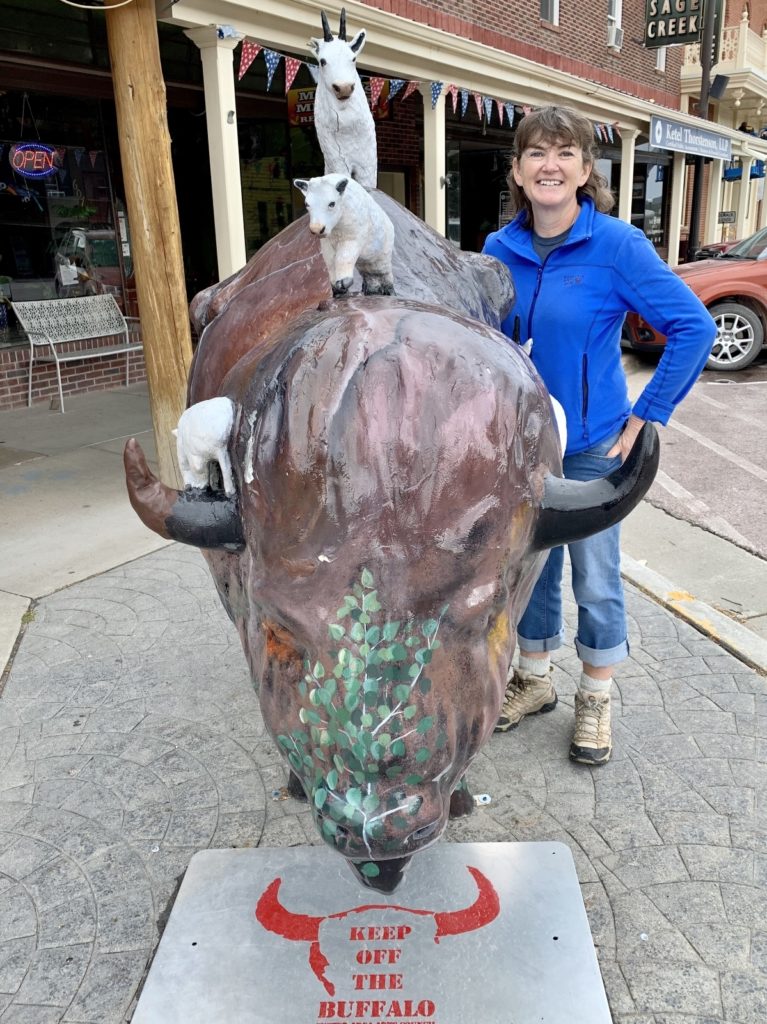
The Lakota call them Paha Sapa, “hills that are black”. From a distance, the Black Hills appear black as they tower several thousand feet above the surrounding prairie. To the tribes of the Great Plains, the Black Hills were, and still are, sacred land. Located in western South Dakota and northeastern Wyoming, Black Hills National Forest includes nearly 1.25 million acres of stunning rock formations, pine forests, grasslands, streams, lakes, and some of the world’s largest caves. Bighorn sheep, mountain goats, deer, elk, pronghorn, bison, and prairie dogs make their homes in this diverse terrain.
In 1874, gold was discovered by a member of an exploration party lead by Lt. Colonel George A. Custer. That discovery would change The Hills forever. By late 1877, Native People had been displaced, major gold strikes in Deadwood and Lead turned the northern Black Hills into a boom area, and The Hills became a part of the Dakota Territory. Today, it is a tourist mecca. Visitors have a dizzying array of activities to choose from including multiple state and national parks, scenic drives, museums, and charming towns full of Wild West history. There is something for everyone in the Black Hills.
Just a few of the sites you’ll find around the Black Hills:
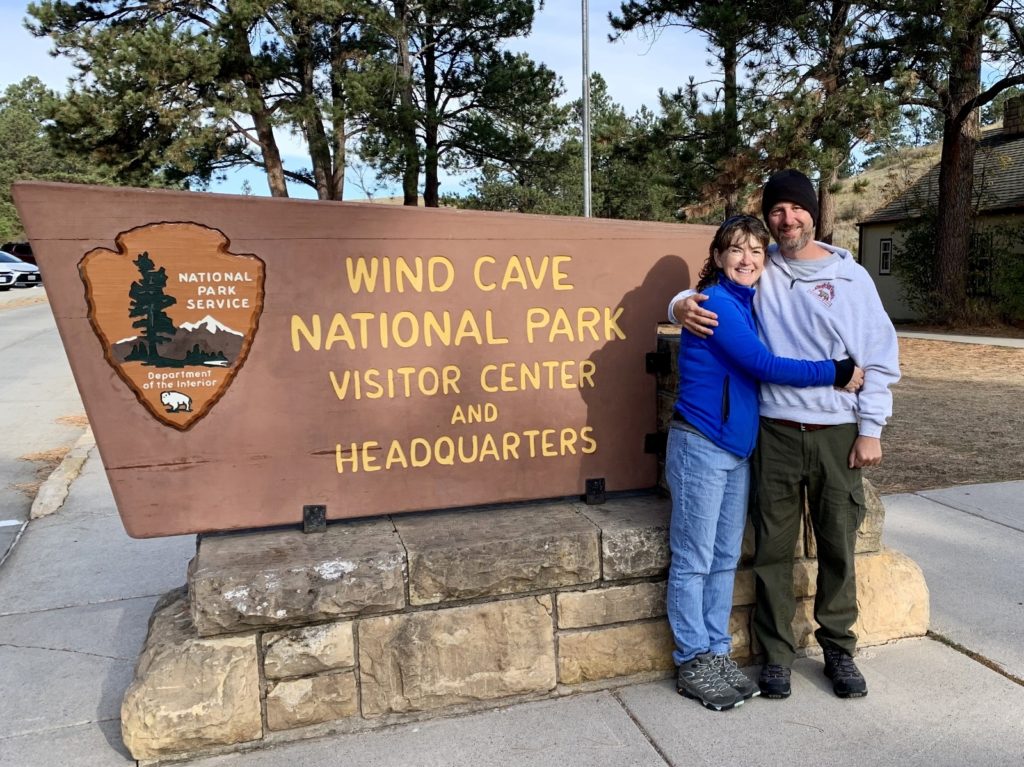
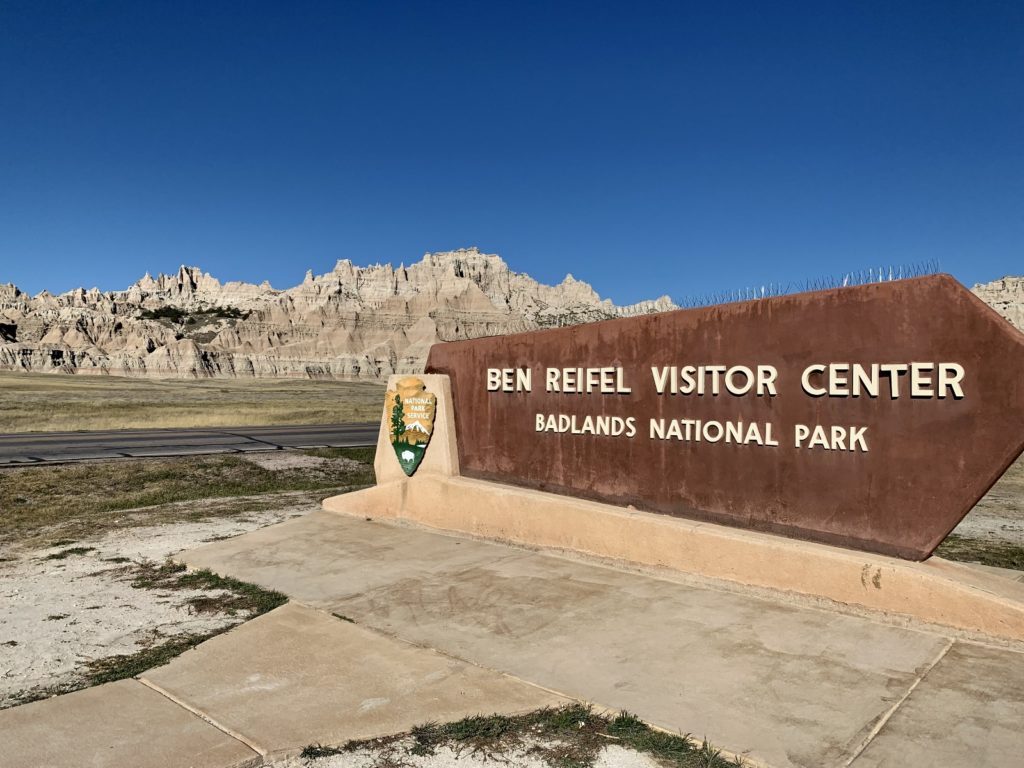
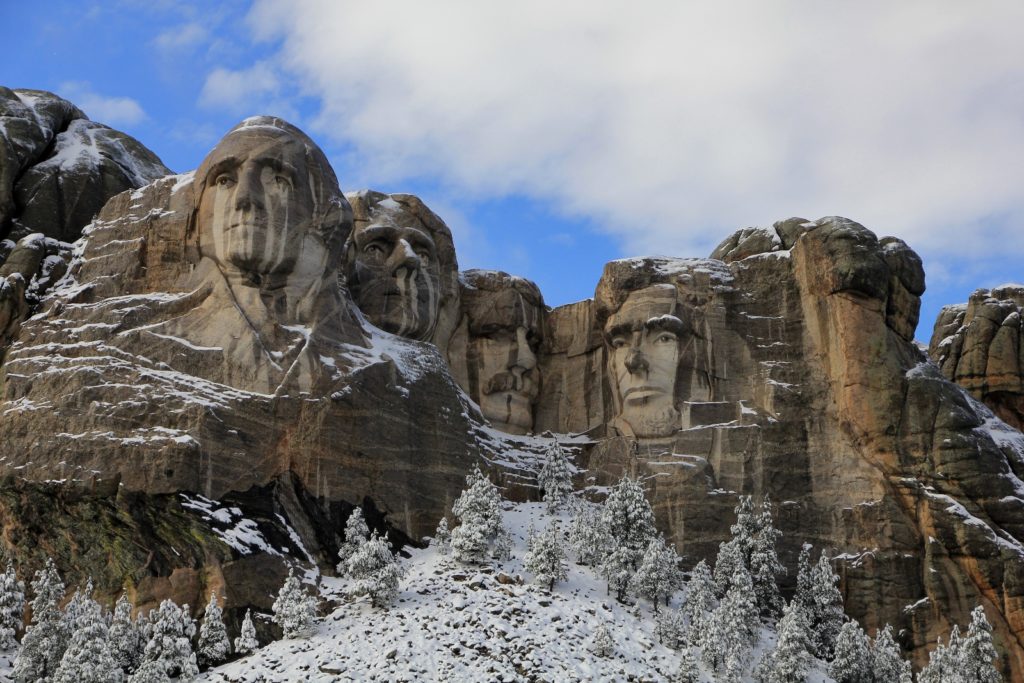
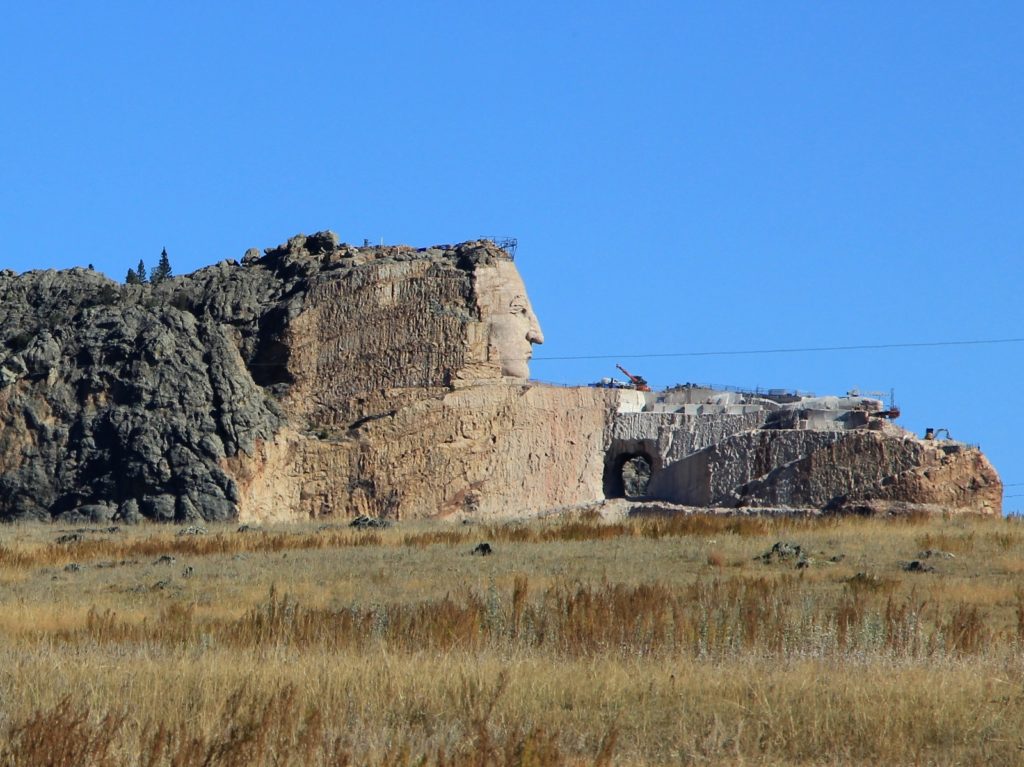
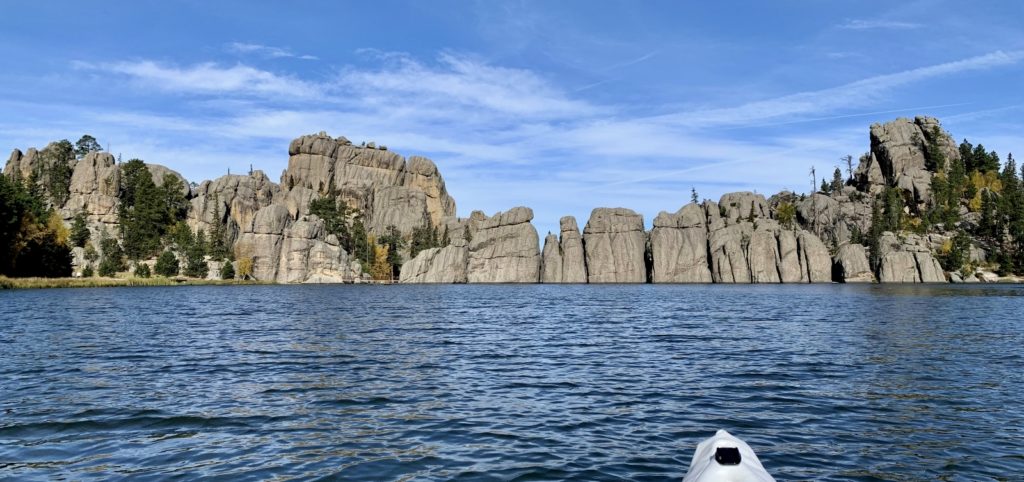
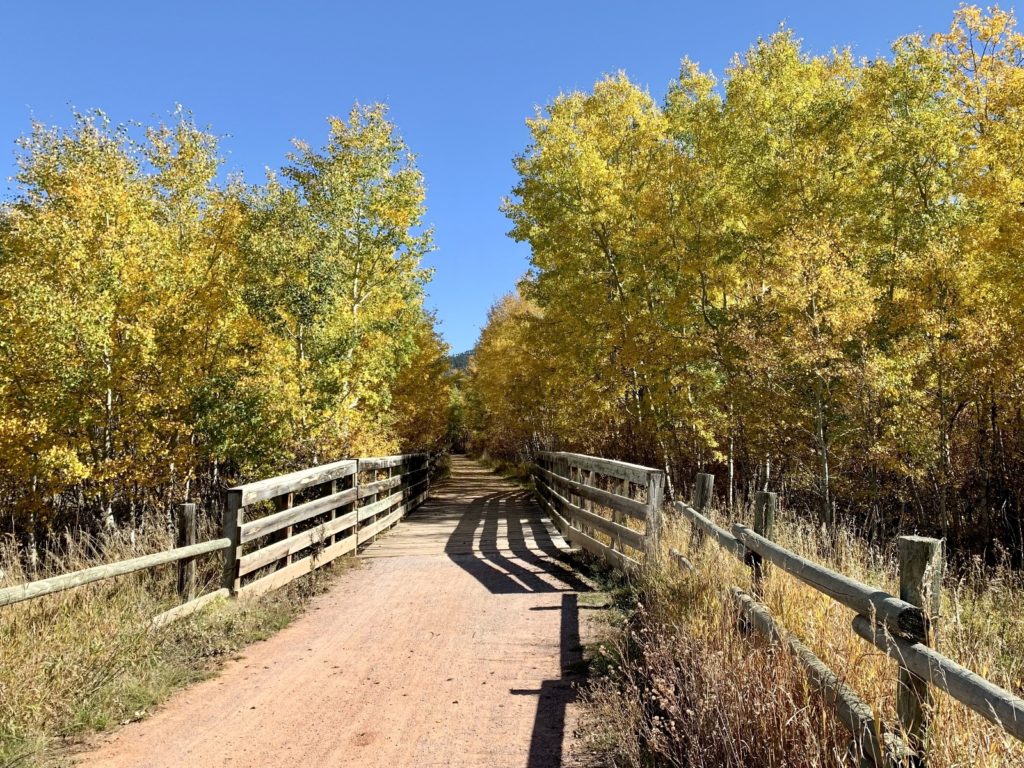
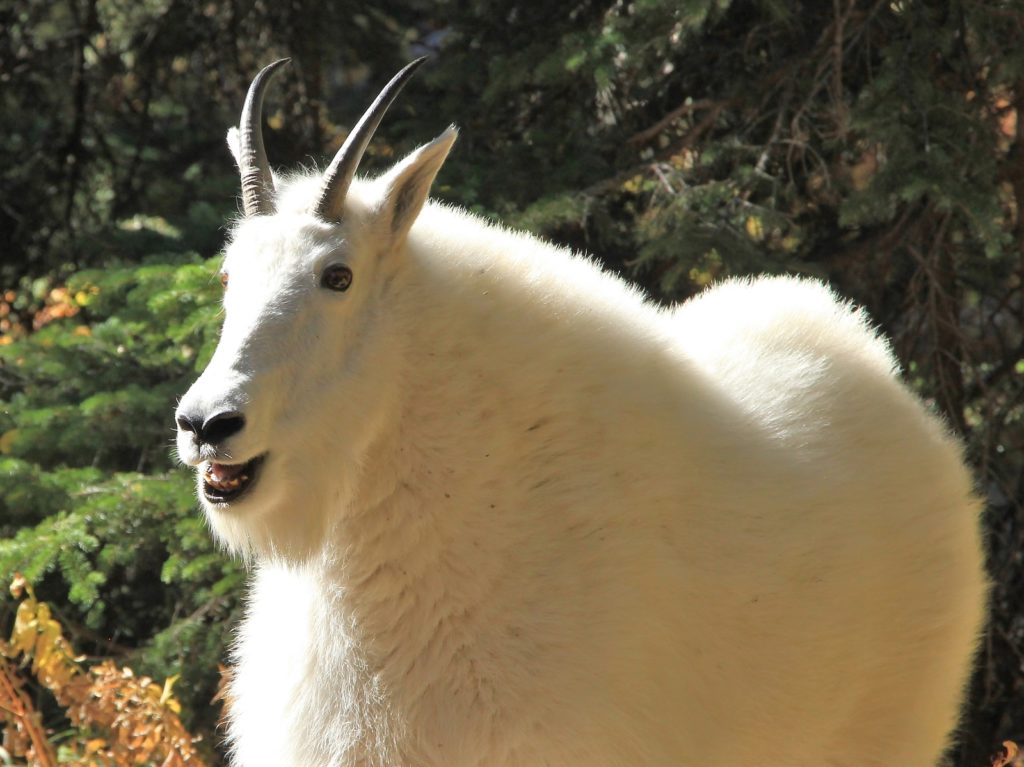
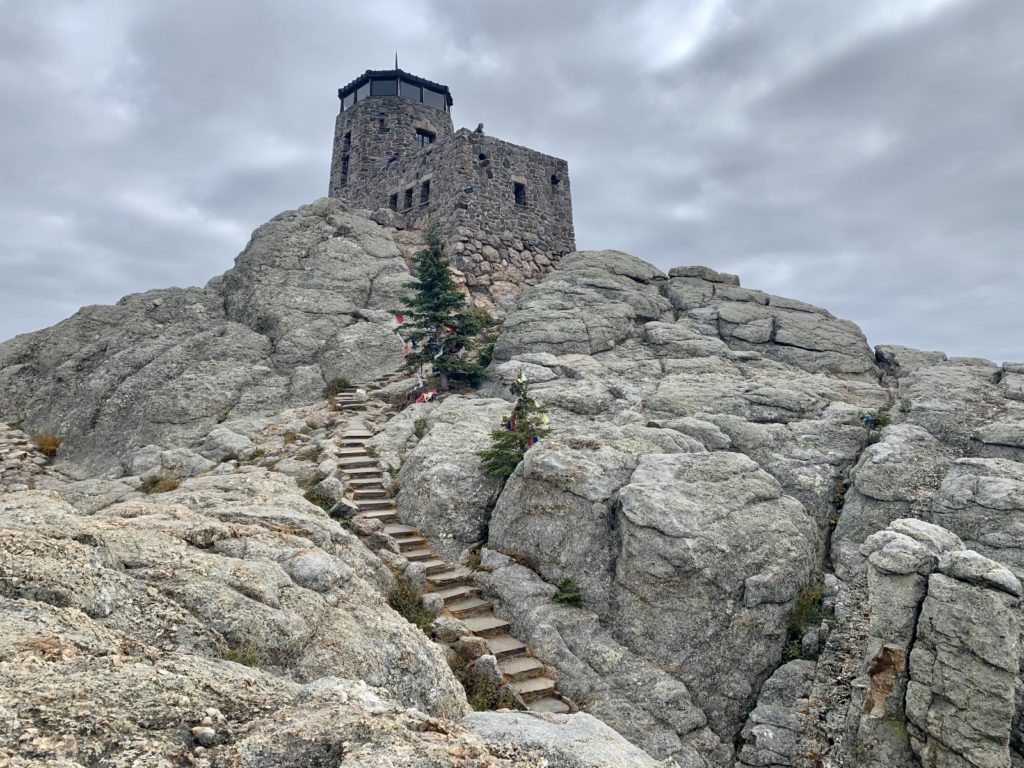
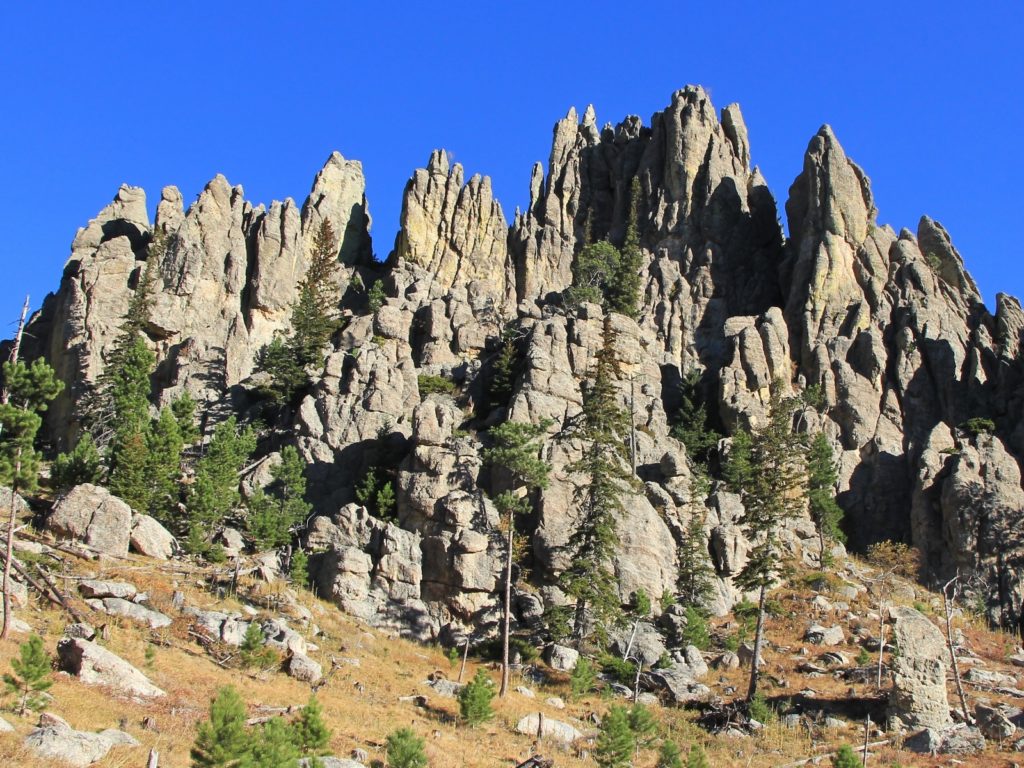
Planning our visit to the Black Hills and surrounding area was a little overwhelming. I wanted to see more than we could possibly fit into one stay. I finally whittled it down to a rather lengthy ‘must see’ list. Mount Rushmore National Memorial, Wind Cave National Park, Jewel Cave National Monument, Badlands National Park, and Devils Tower National Park were naturally at the top of my list (given my desire to visit every National Park Unit). Custer State Park with its stunning scenery, wildlife, and scenic drives would require several days. Fall colors in Spearfish Canyon were a must. And rounding it all off we wanted to ride our new e-bikes on the Mickelson Trail, a Rail-Trail Hall of Fame. I’ll cover each of those adventures in upcoming blog posts. For today’s post, I’d like to share a few of the lesser known Black Hills gems we found.
Sheridan Lake South Shore Campground
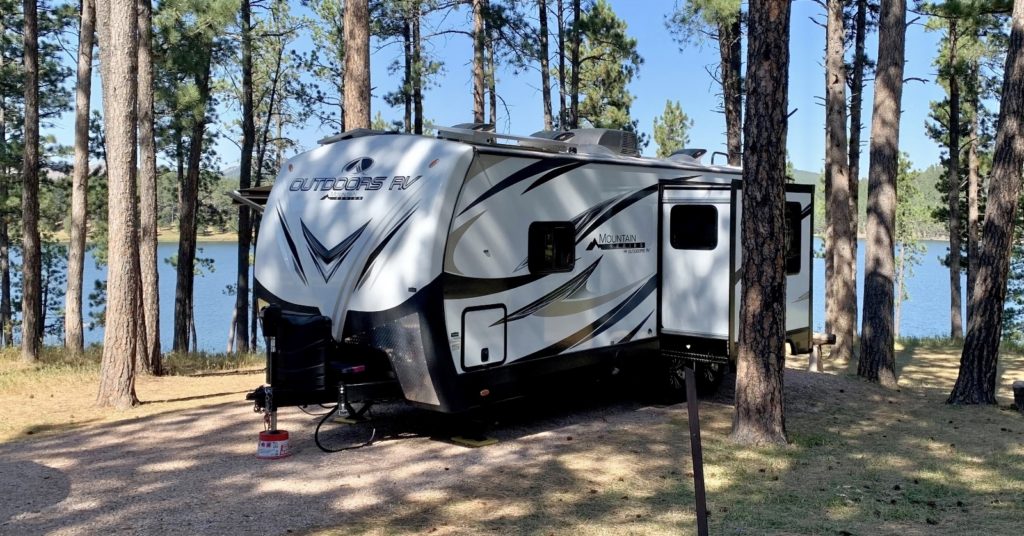
For our three week stay in the Black Hills, we selected Sheridan Lake South Shore Campground as our basecamp for the first 12 nights. Sheridan is a large Forest Service campground with 129 sites in five loops. Located in ponderosa pine forest just north of Hill City, it was conveniently located to most of the areas we wanted to visit in the Black Hills. During the off-season, only the Woodsy Loop remains open and that’s where we found our gorgeous lakeview site. The campground was quiet during the week, but popular on weekends. The off season rate was just $10 per night with the only services being pit toilets and garbage. We especially enjoyed the variety of birds and that we could kayak right from our campsite.
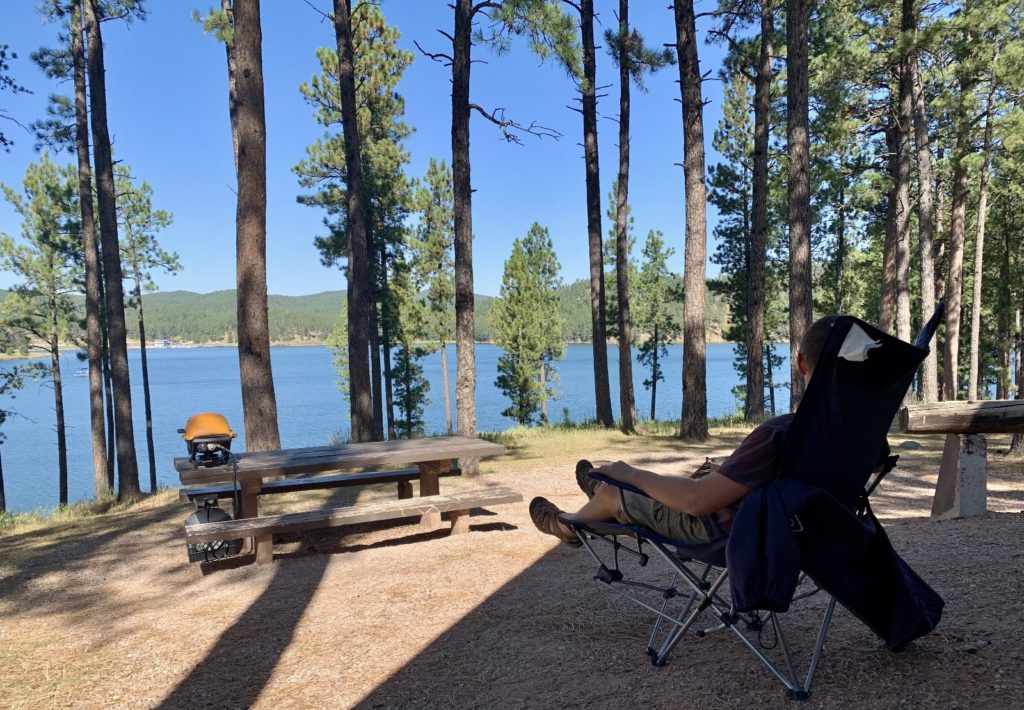
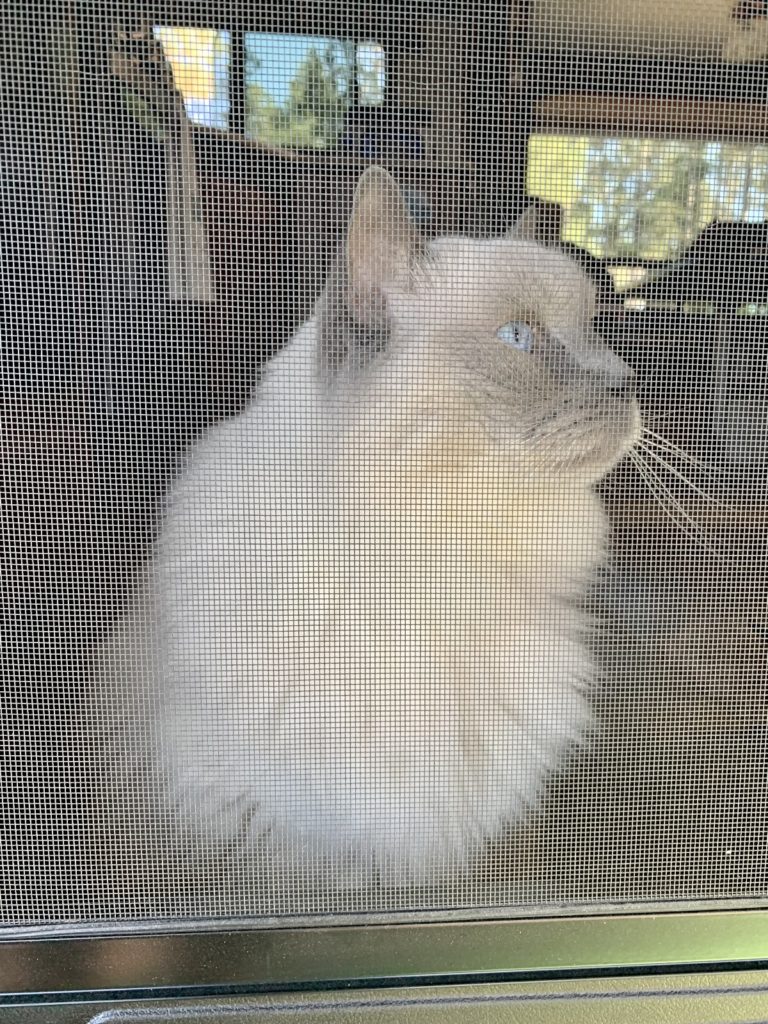
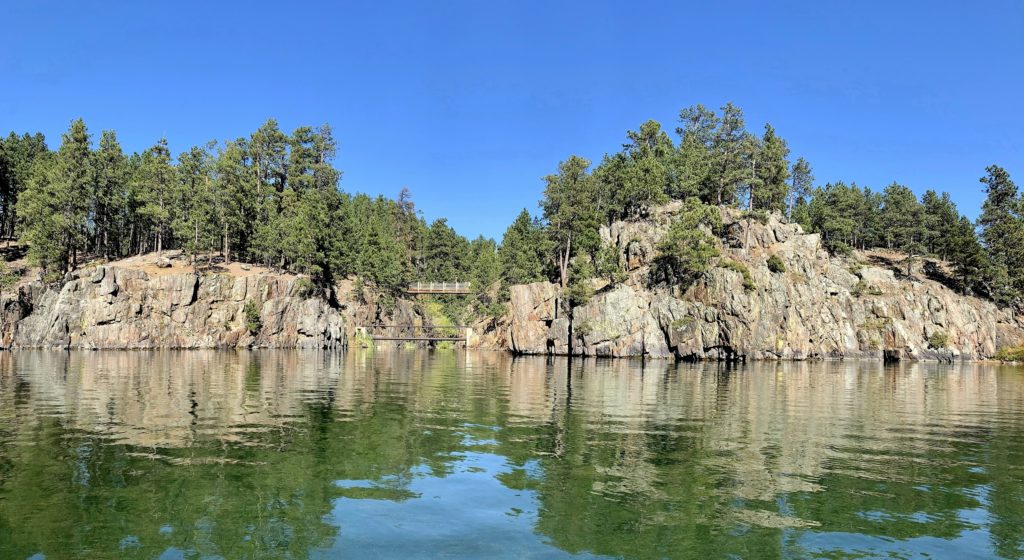
Hill City
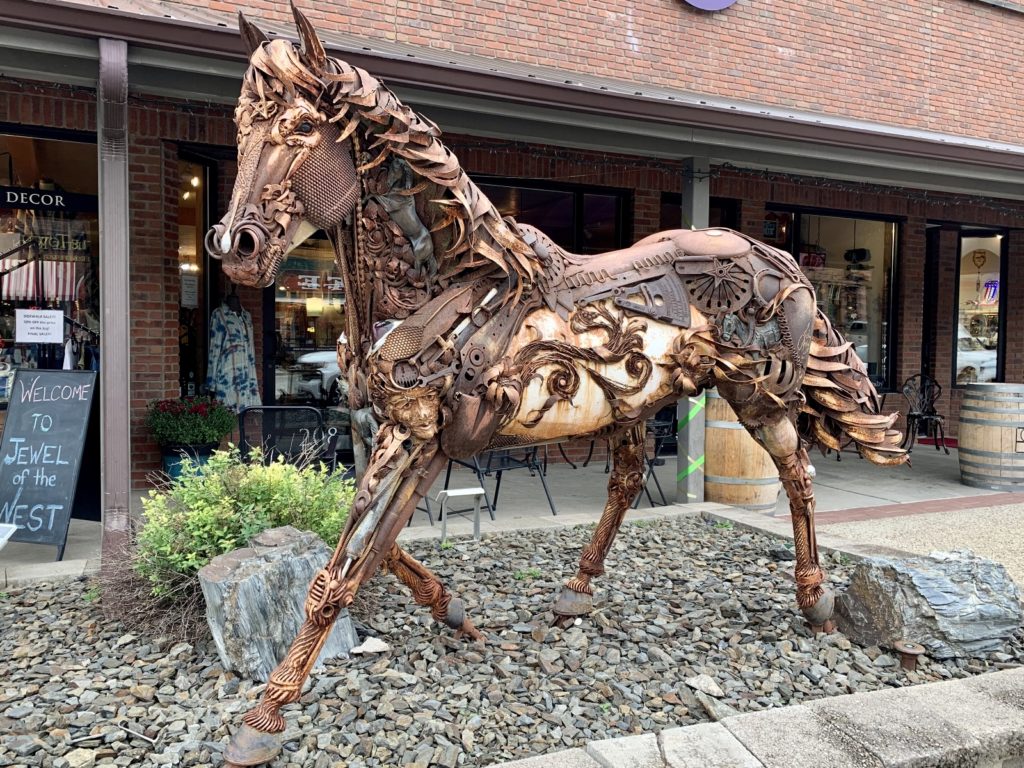
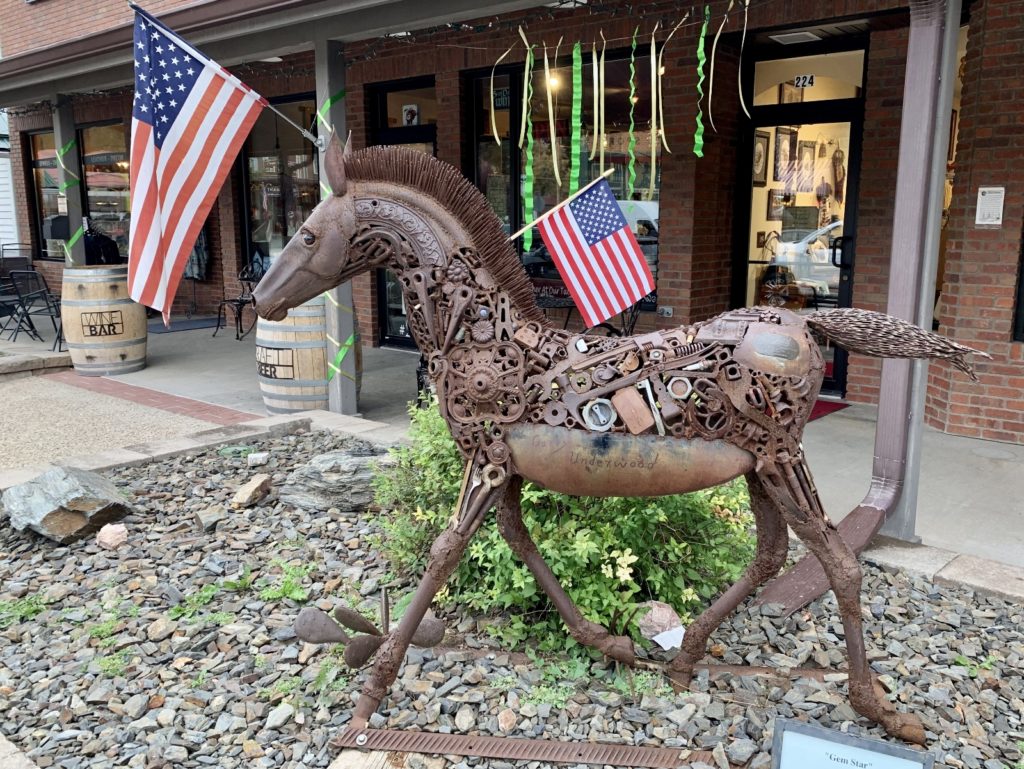
Hill City is a charming town in the central Black Hills. As the closest town to our campsite, it served as a frequent resupply location for us. While there, we enjoyed visiting the CCC Museum of South Dakota and riding the 1880 Train.
CCC Museum of South Dakota
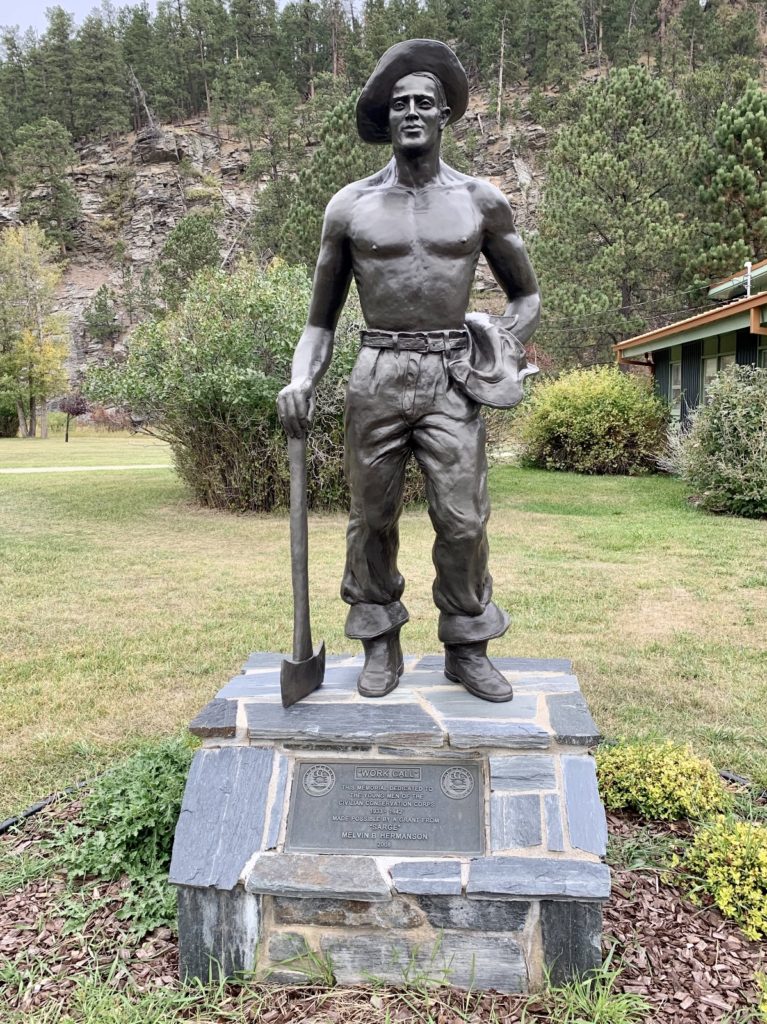
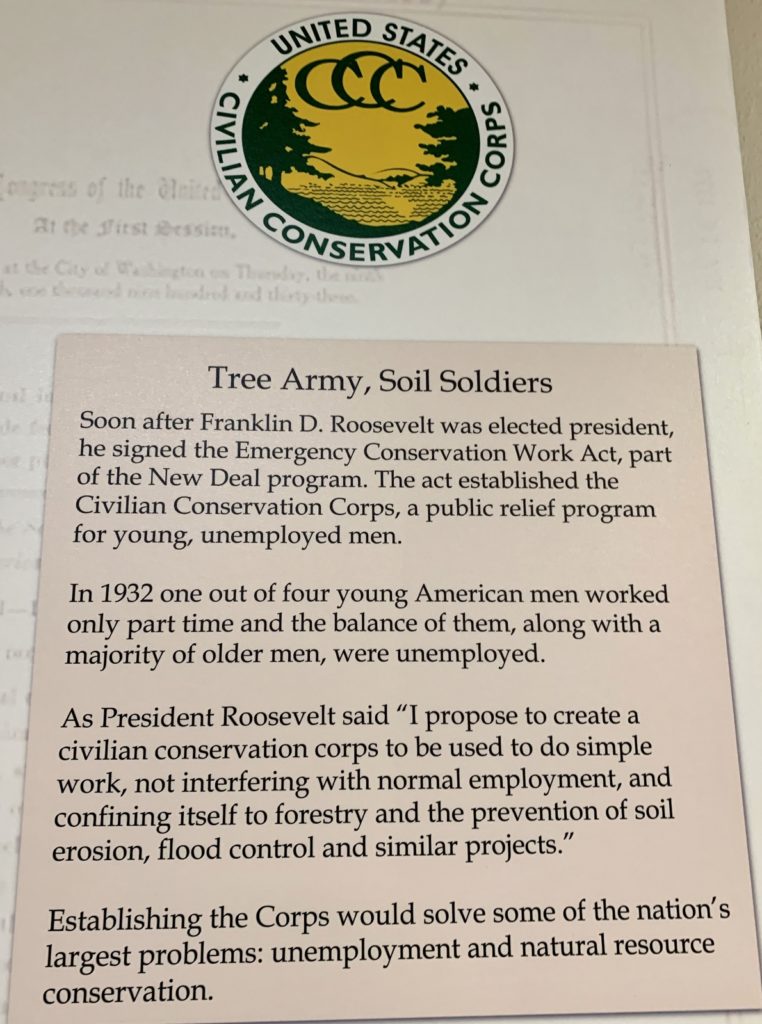
I’m always drawn to Civilian Conservation Corps (CCC) history. Not only do we have the program to thank for many of the trails and parks we enjoy during our travels, but my grandpa was a CCC boy before heading off to serve in World War II. The CCC was a voluntary public work relief program that operated from 1933 to 1942 for young unemployed, unmarried men. A major part of President Franklin D. Roosevelt’s New Deal, it provided manual labor jobs related to the conservation and development of natural resources on lands owned by federal, state, and local governments. The CCC was designed to provide jobs for young men and to relieve families who had difficulty finding jobs during the Great Depression in the United States. Three million young men participated in the CCC, which provided them with shelter, clothing, and food, together with a wage of $30 per month, $25 of which had to be sent home to their families. More than 30,000 men worked at South Dakota sites alone—many of which we visited. Nearly 100 years old, their hard work is still visible almost everywhere we go and we cannot thank them enough.

The CCC Museum of South Dakota is located in the upstairs of the Hill City Visitor Center on the north end of town. They have an excellent collection and the volunteer staff is very friendly and knowledgeable. Admission is free, but donations are gratefully accepted.
The CCC Boys were everywhere!
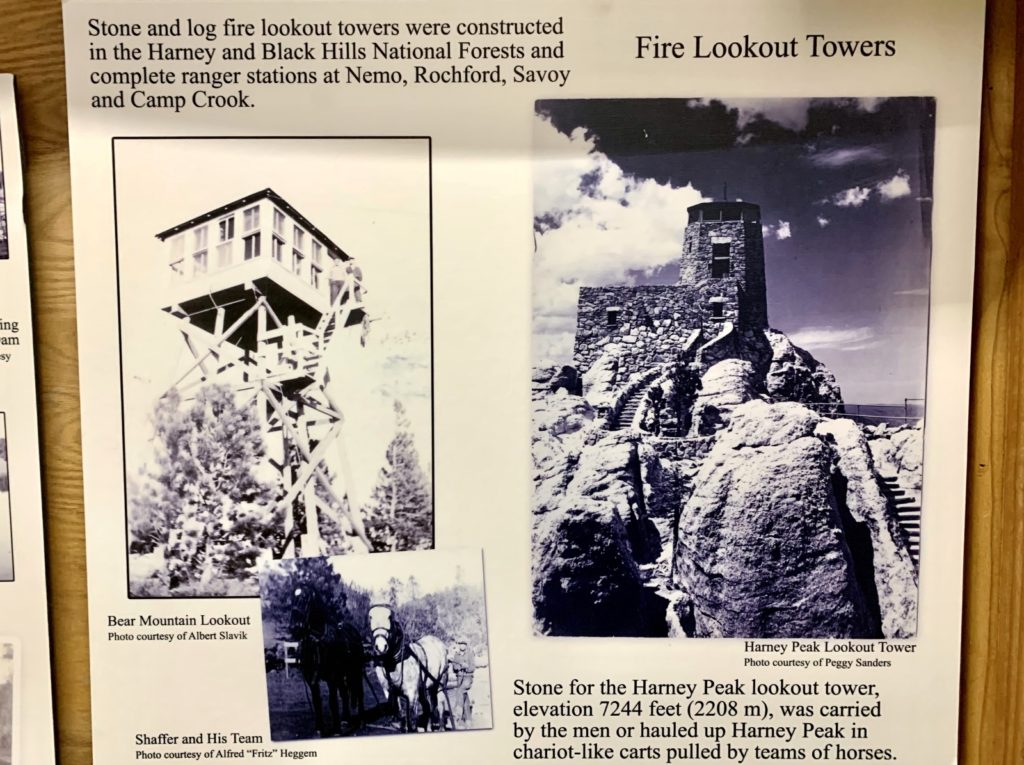
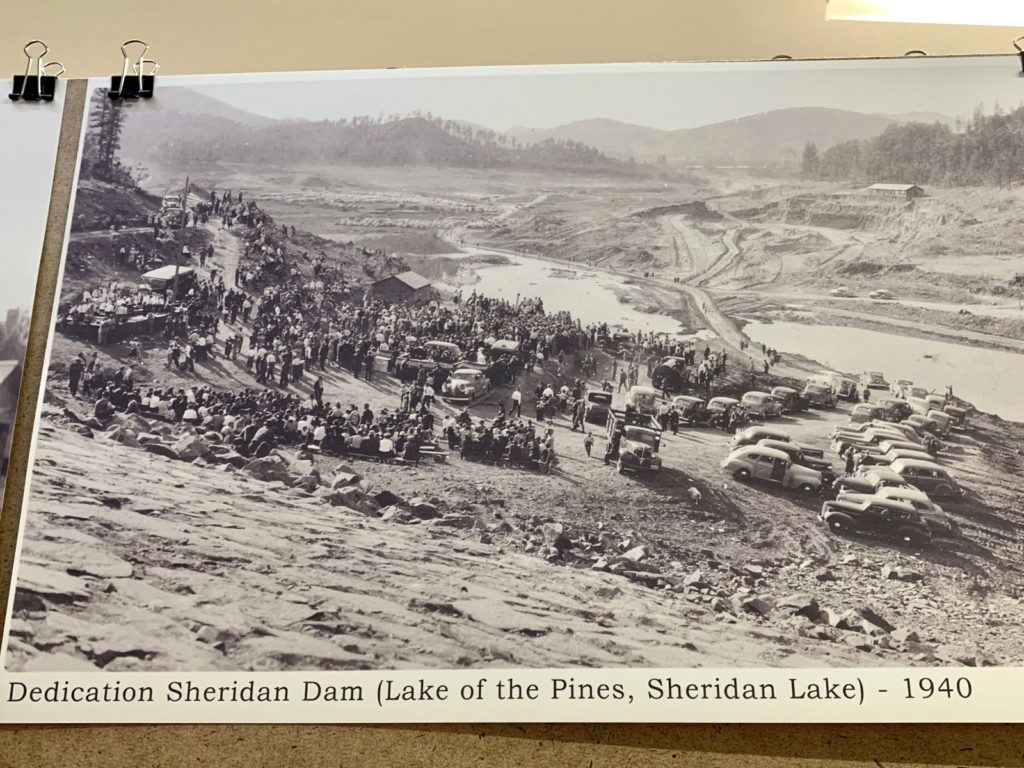
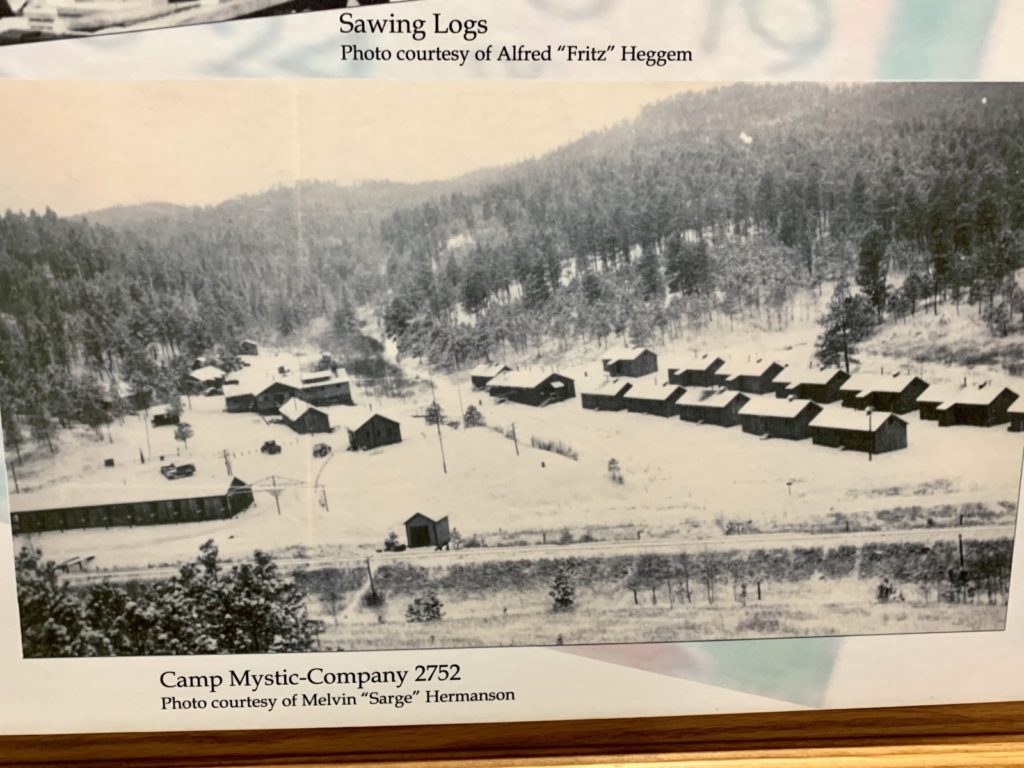
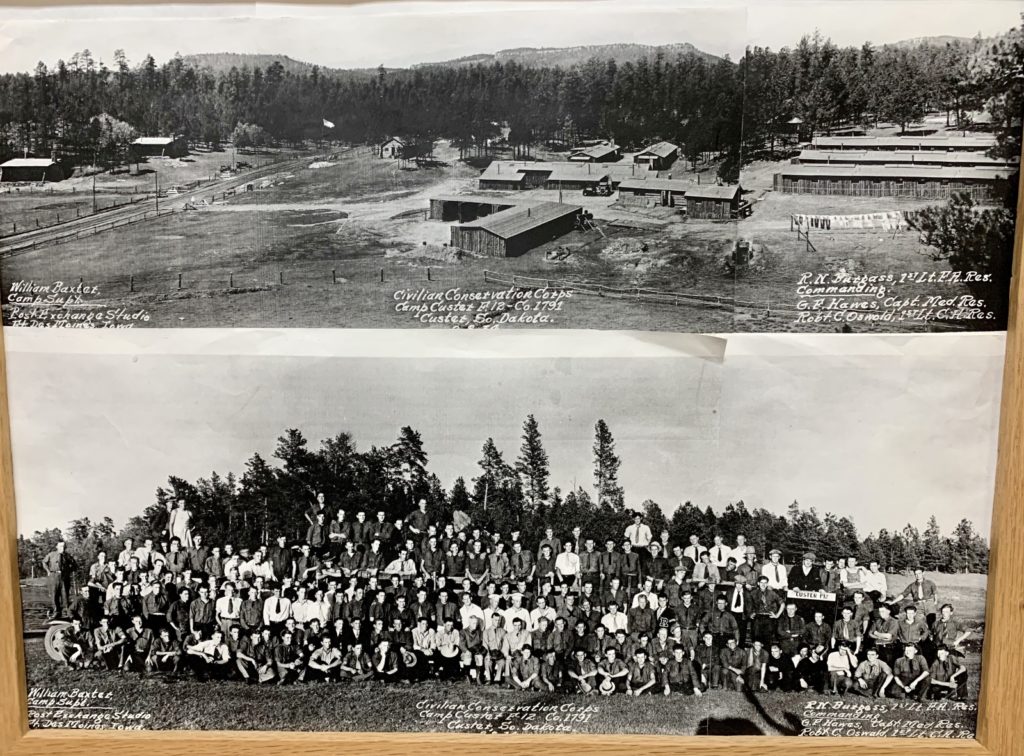
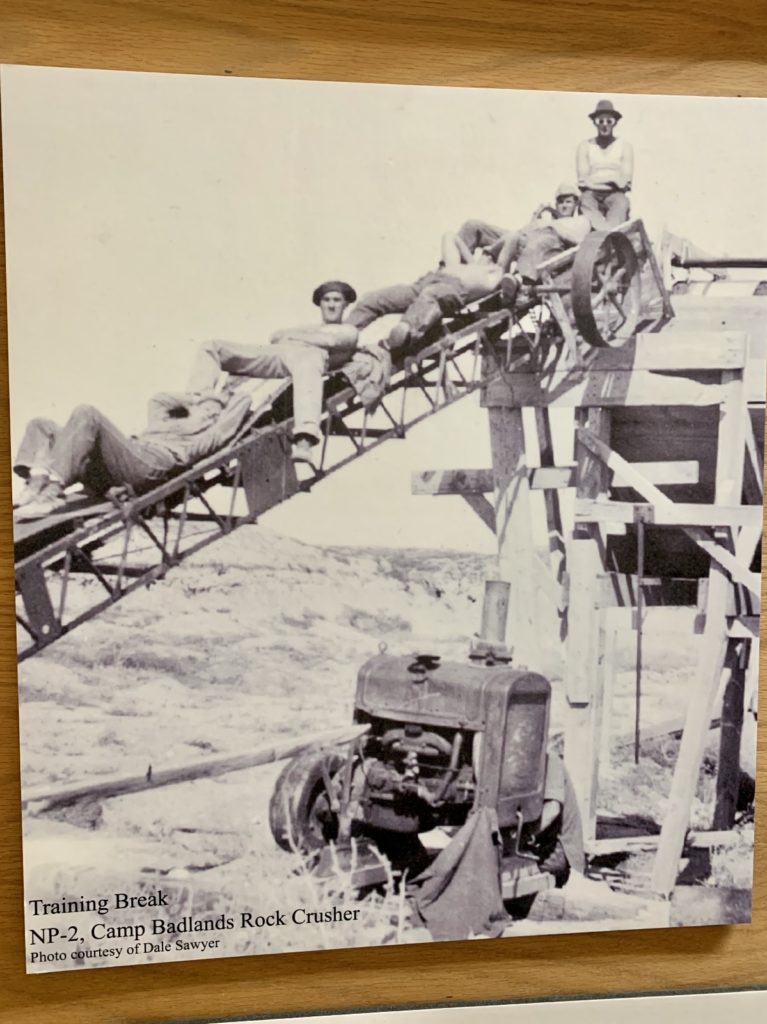
1880 Train
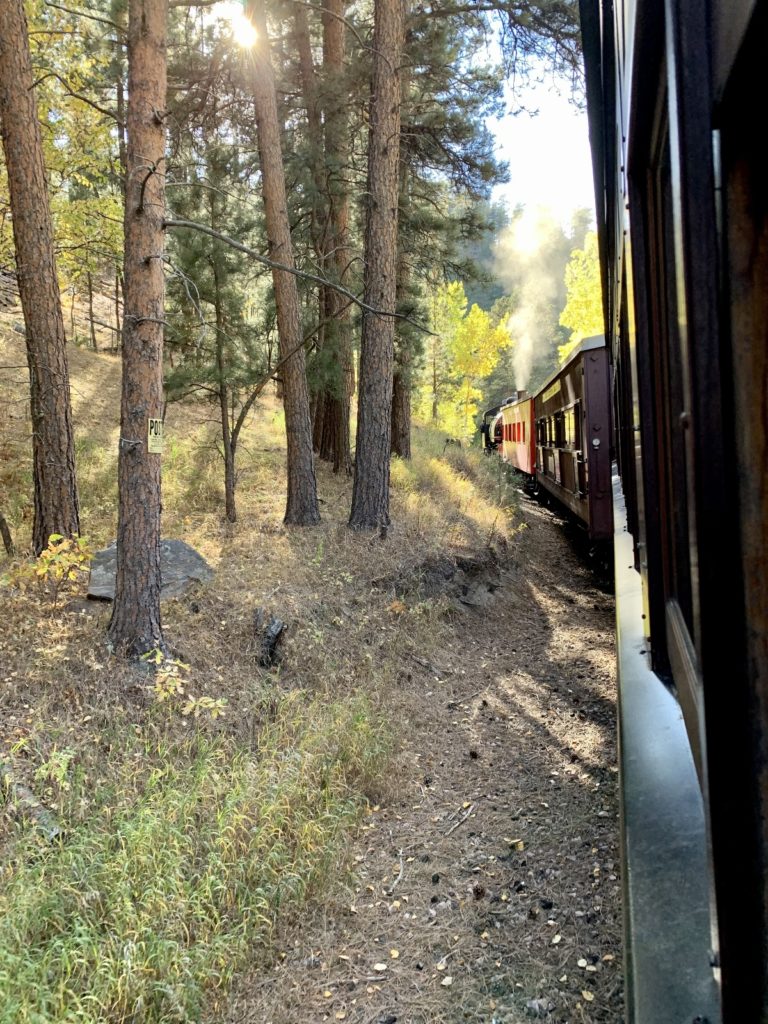
Perhaps nothing else paints a more romantic picture of the American West than the railroad. It certainly was one of the most influential forces on the development of the American frontier, for better or for worse. Treaties were broken and Native Peoples were displaced to make room for its expansion. Tracks crossed the plains and mountains and brought settlers to previously unsettled areas.
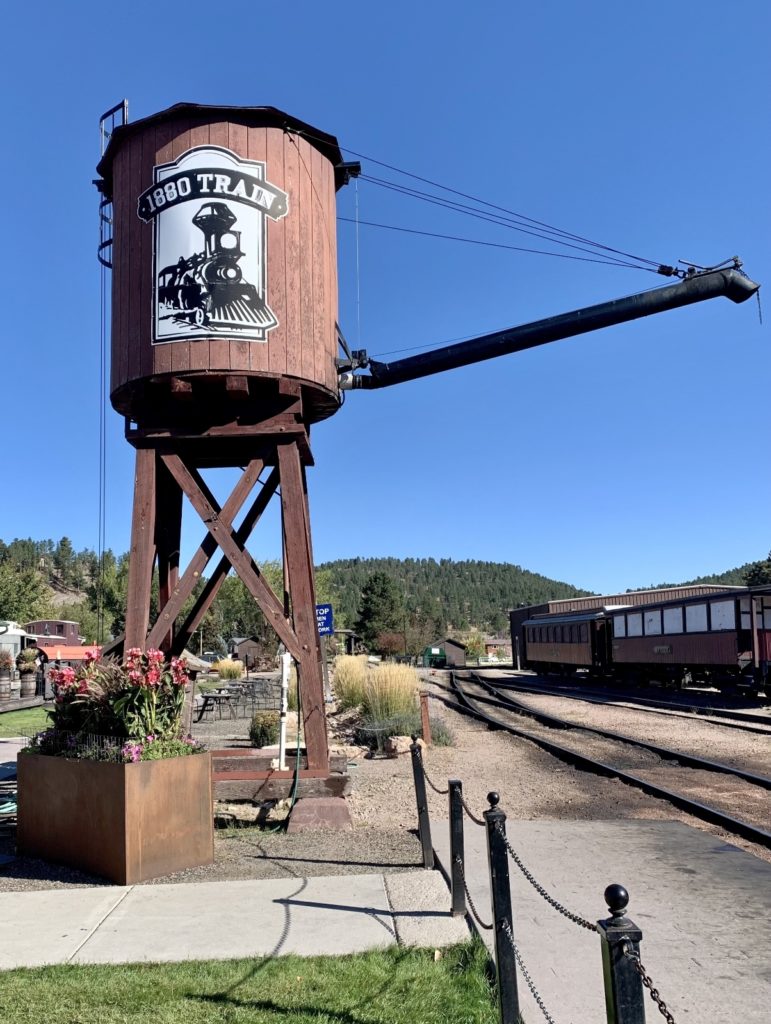
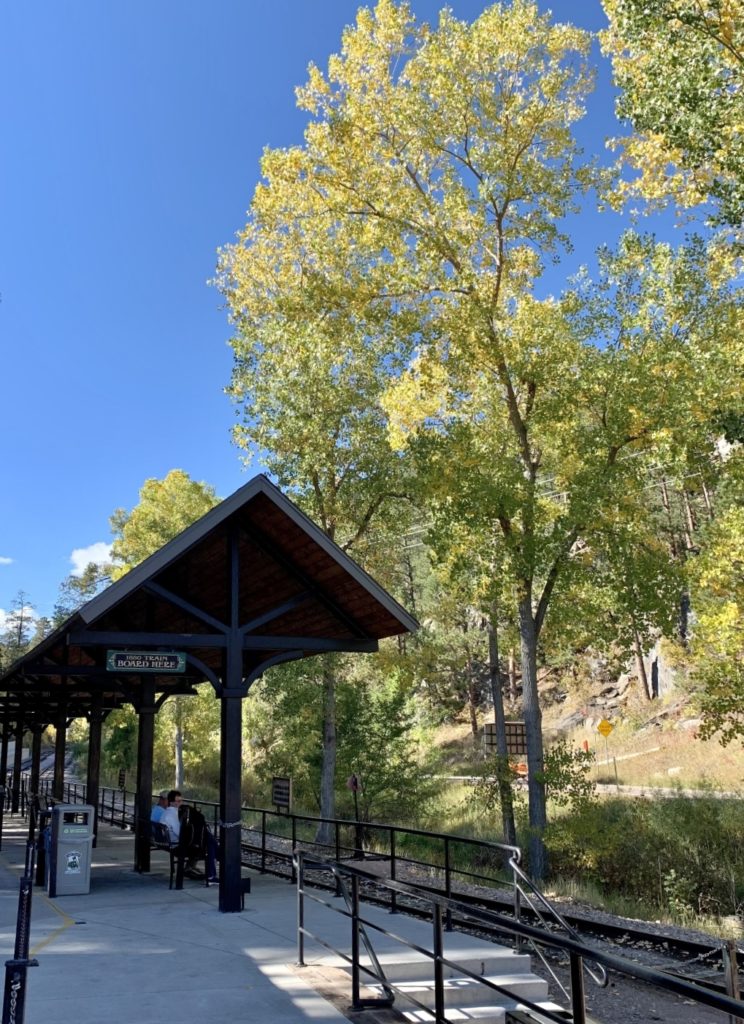
The Burlington Railroad that hosts the 1880 Train was built between Hill City and Keystone during the central Black Hills mining boom in the 1890s. During the late 1940s, diesel engines became more common than steam. In the 1950s, William Heckman decided to start a railroad where steam actually operated and was not just relegated to static display. “There should be in operation at least one working steam railroad, for boys of all ages who share America’s fondness for the rapidly vanishing steam locomotive.” In 1957, the first official train operated on the Black Hills Central Railroad. Veteran Burlington engineer Earl Coupens piloted the Klondike Casey and its two open-air coaches away from the Burlington’s vintage 1890 Hill City depot, up the four-percent grade of Tin Mill Hill and on to Oblivion. The route was nicknamed “the 1880 Train,” as it was likened to riding a train in the 1880s.
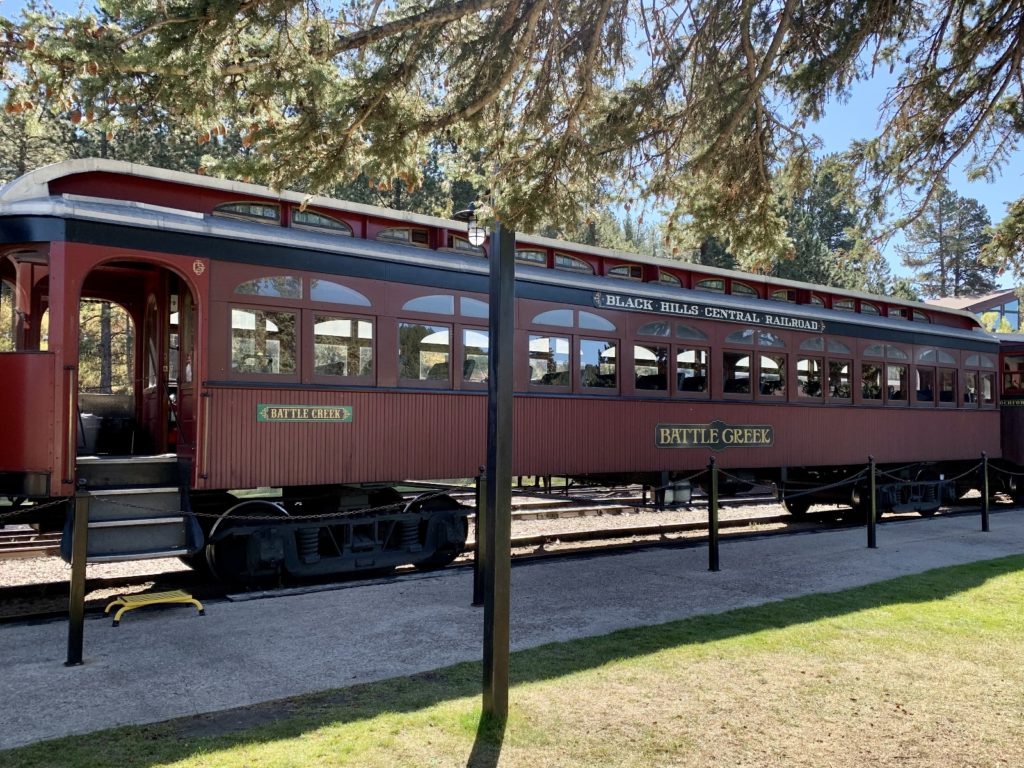
Robert and JoAnna Warder bought the Black Hills Central Railroad in 1990. The existing operational locomotives were restored to prime condition, as were a number of the pieces of rolling stock. In 2001, the link between Hill City and Keystone was restored, and trains were able to travel the steep grade in between the two depots, providing a vintage steam experience.
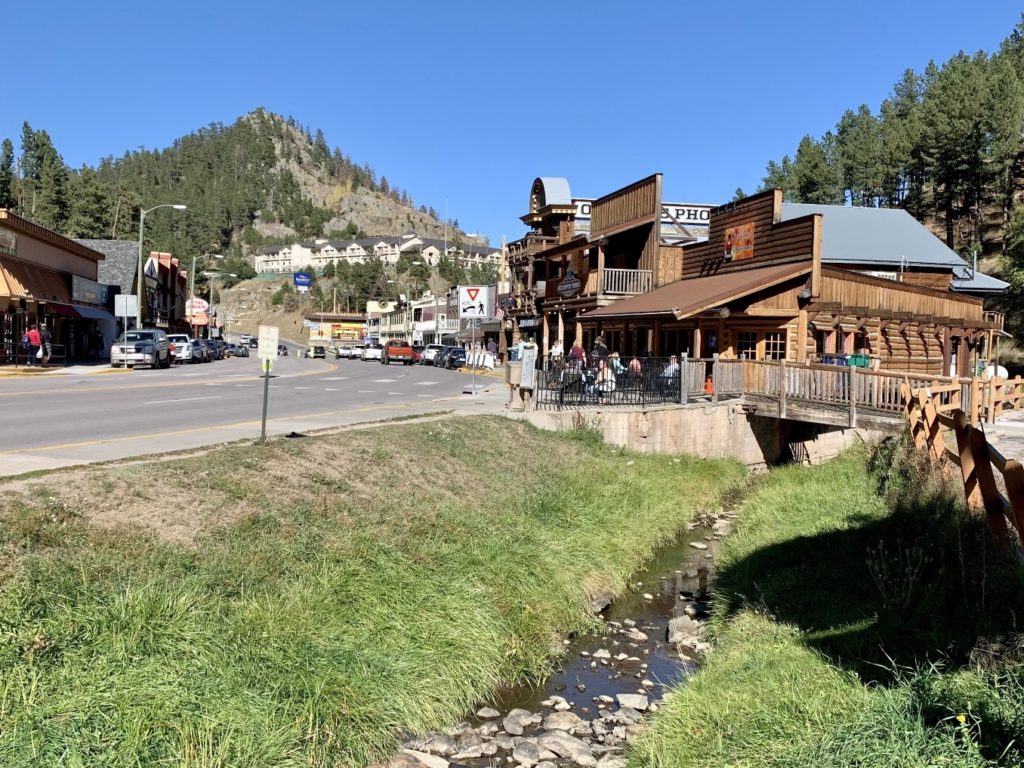
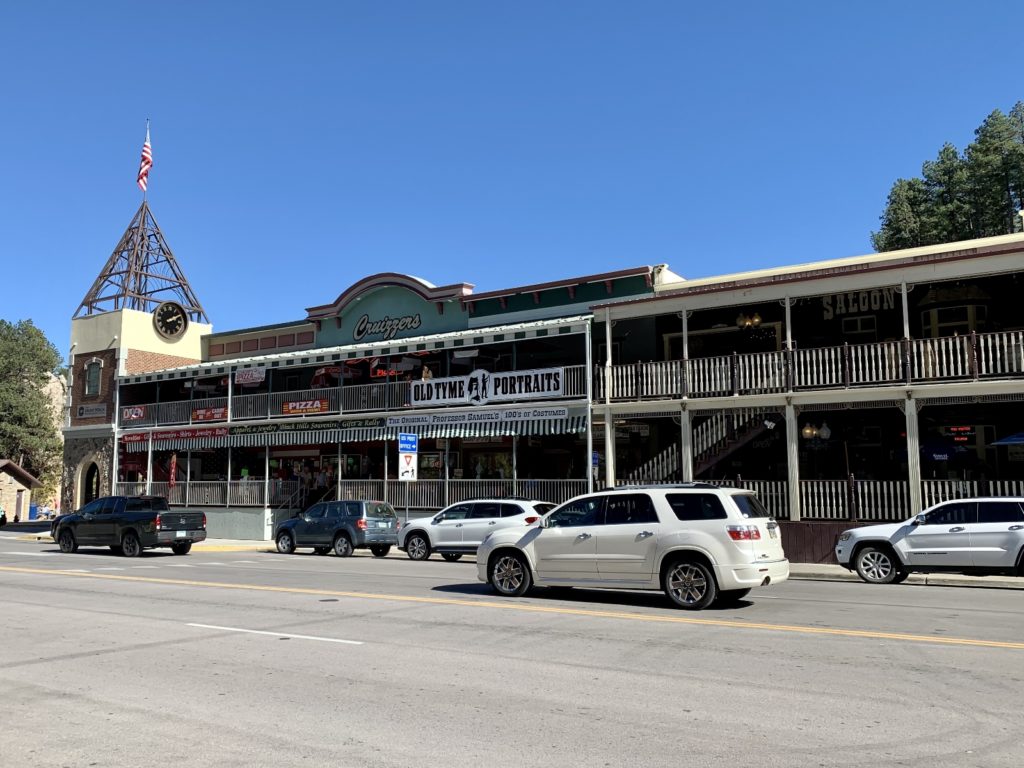
Today, the 1880 Train along the Black Hills Central Railroad is the oldest continuously operating tour railroad in the nation. Passengers enjoy a two-hour, narrated 20-mile round trip between Hill City and Keystone. The 1880 Train’s regular season runs from mid-May to mid-October. Special Holiday Express tours operate in November and December. Passengers can schedule one-way or round-trip rides departing from either the Hill City or Keystone depot. Adult tickets range from $27-32 and children $14-16, plus 9% sales tax and can be purchased here or at the depots. We scheduled the earliest train out of Hill City with the latest departure from Keystone. This gave us an extended layover in Keystone for lunch and exploring the historic town. We especially enjoyed the wildlife, great views, and fall colors during our ride. This is a great activity for the whole family.
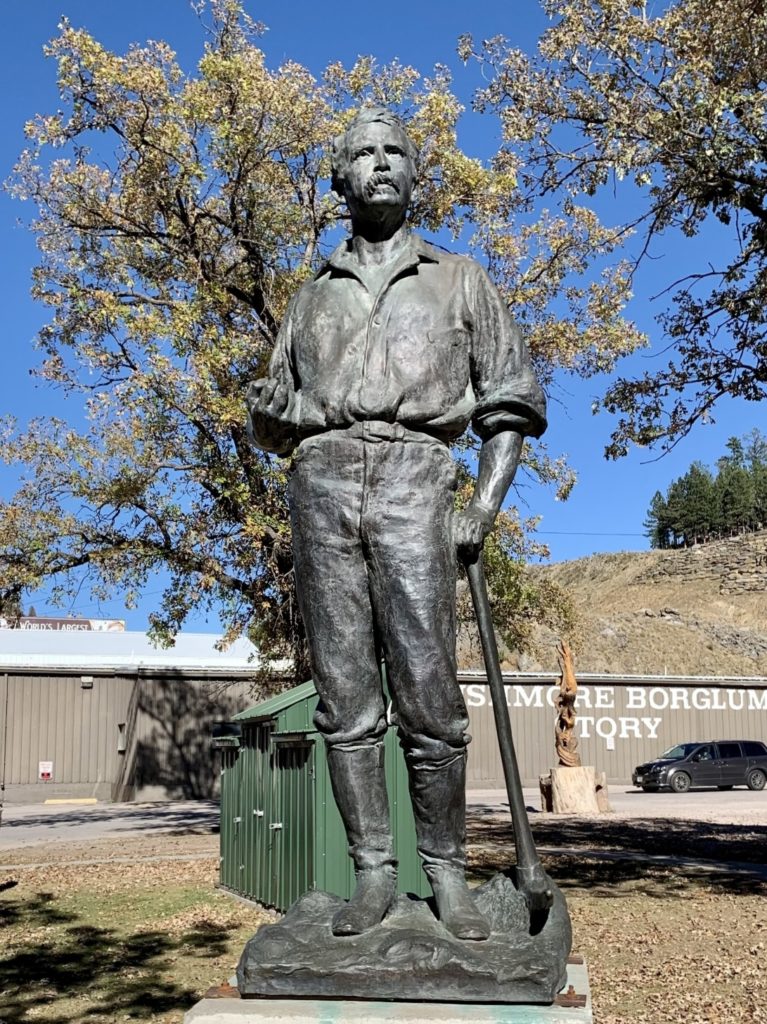
Custer
Custer is another charming town in the Black Hills. We visited several times on our way to Custer State Park, Jewel Cave, and Wind Cave. We especially enjoyed the town’s colorful buffalo statues and eating at Black Hills Burger & Bun. Burger & Bun has, by far, the best buffalo burger I’ve ever had. You’ll likely have a wait to get in, but the food and service are well worth it.
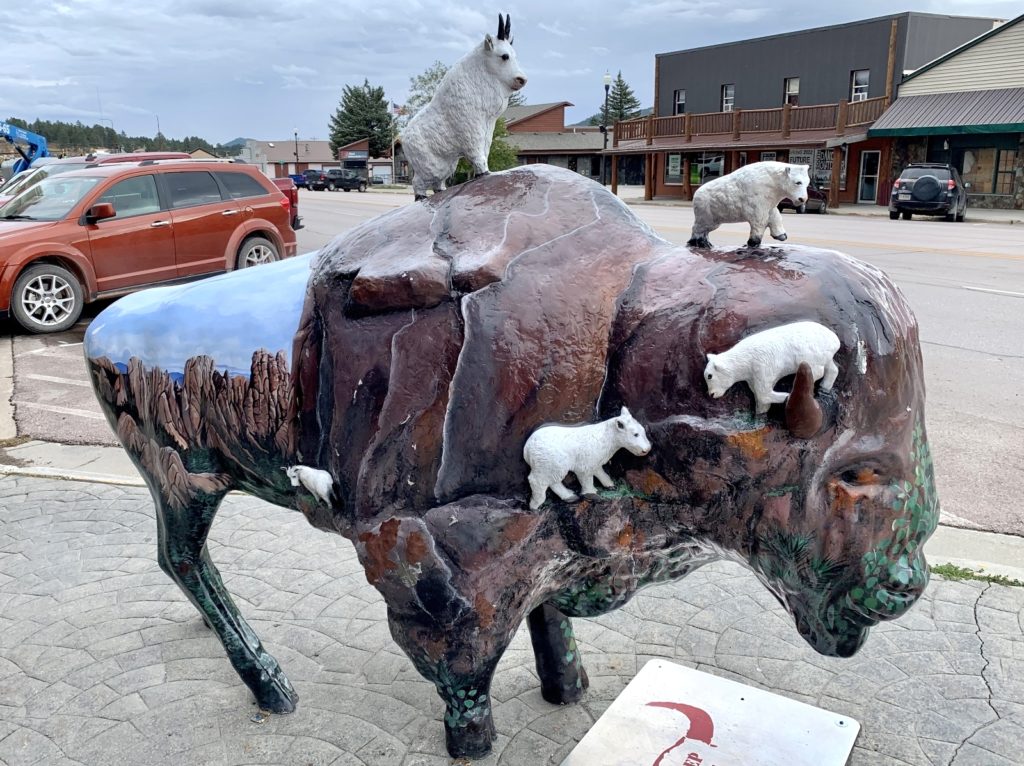
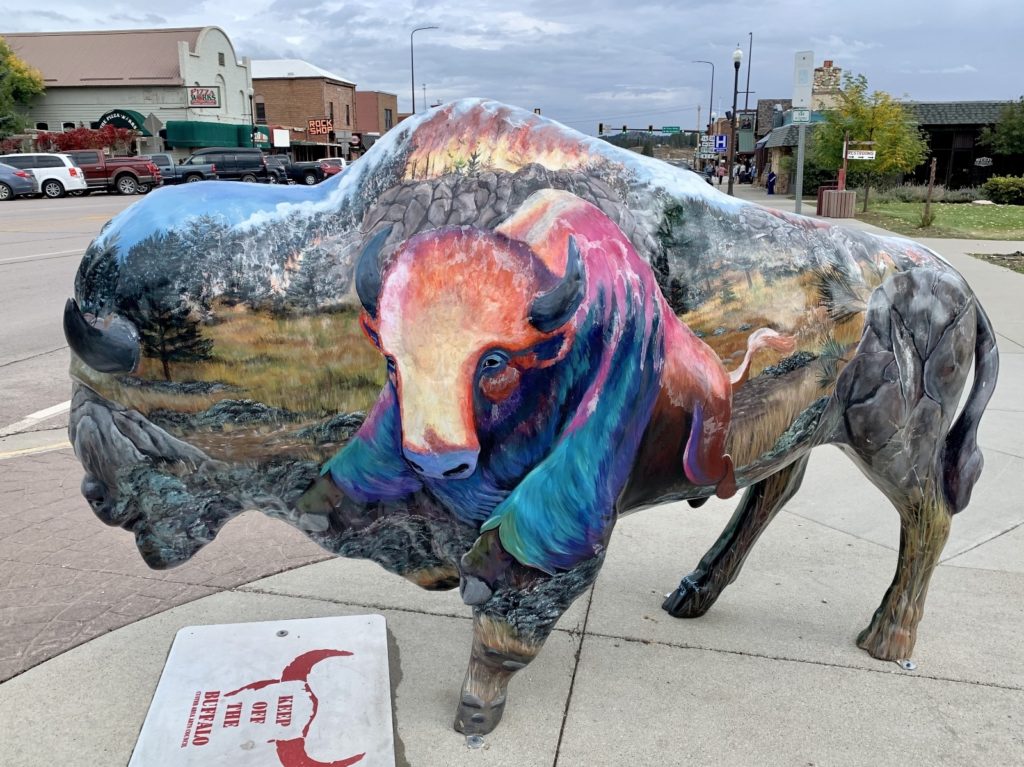
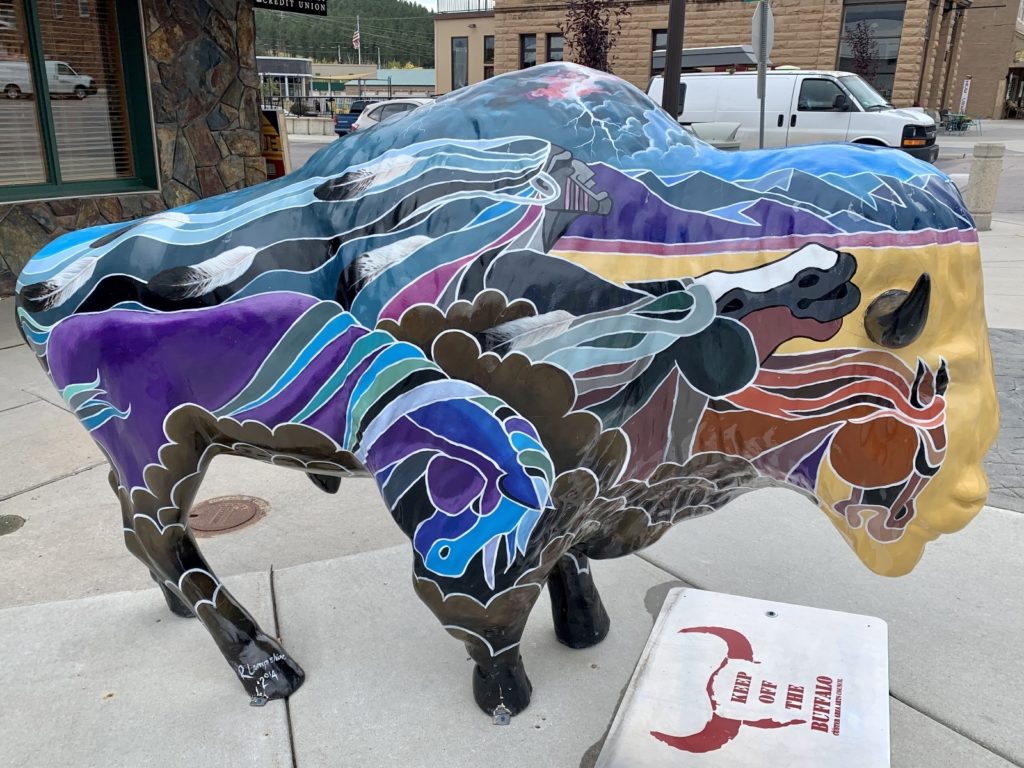
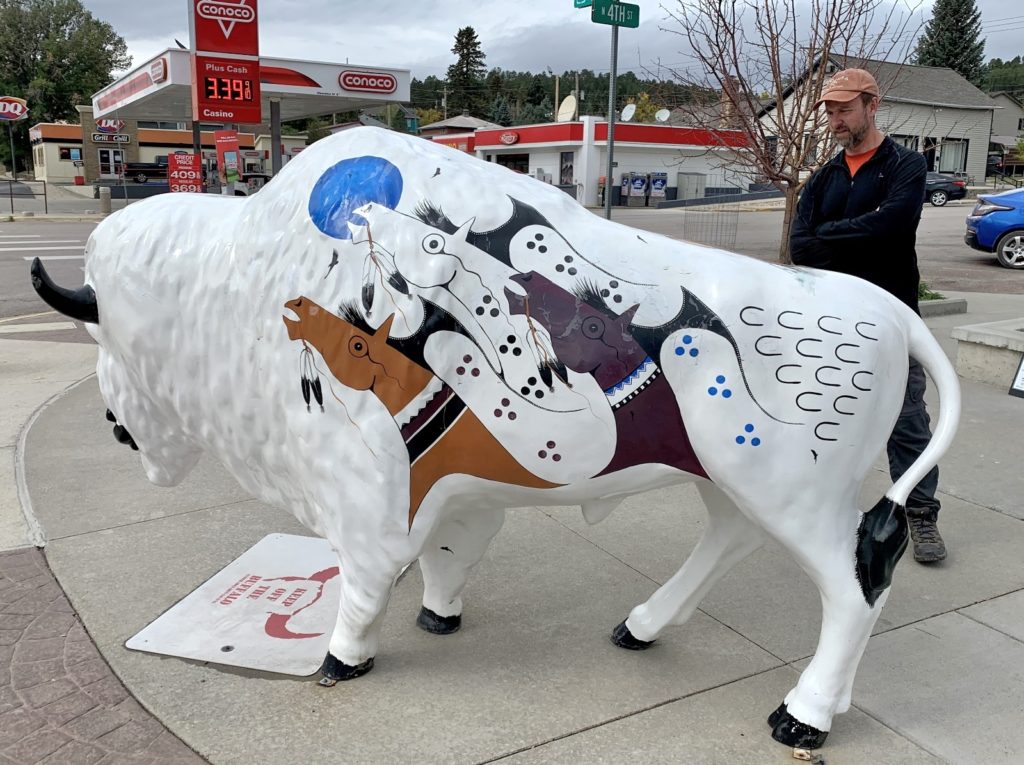
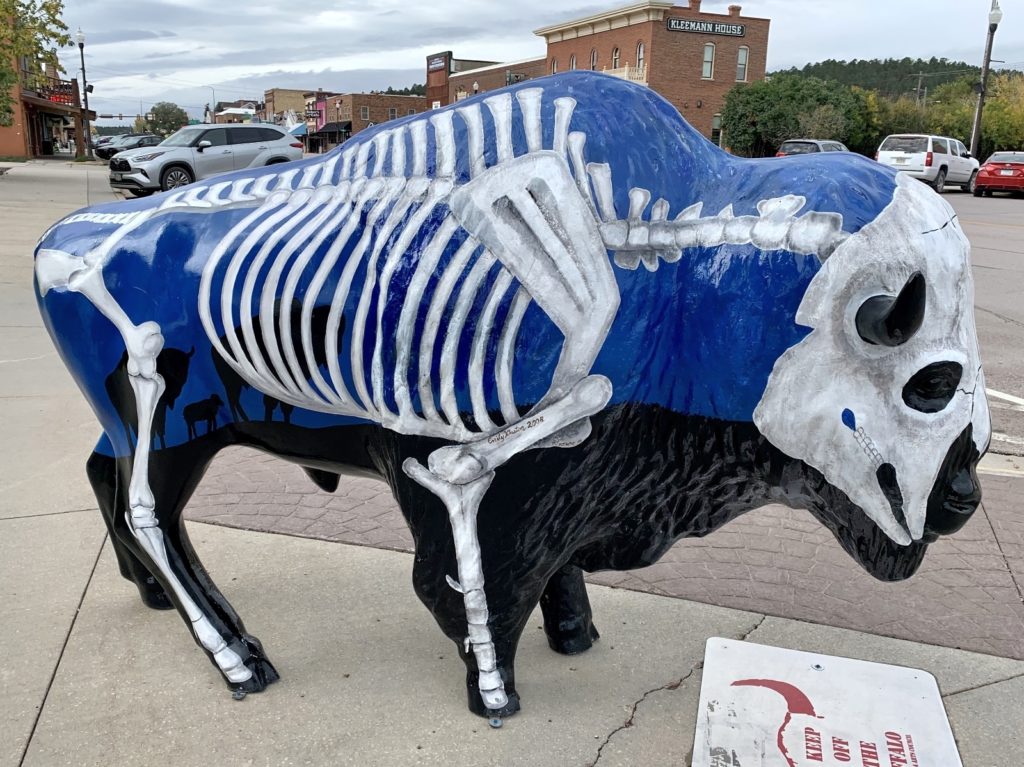
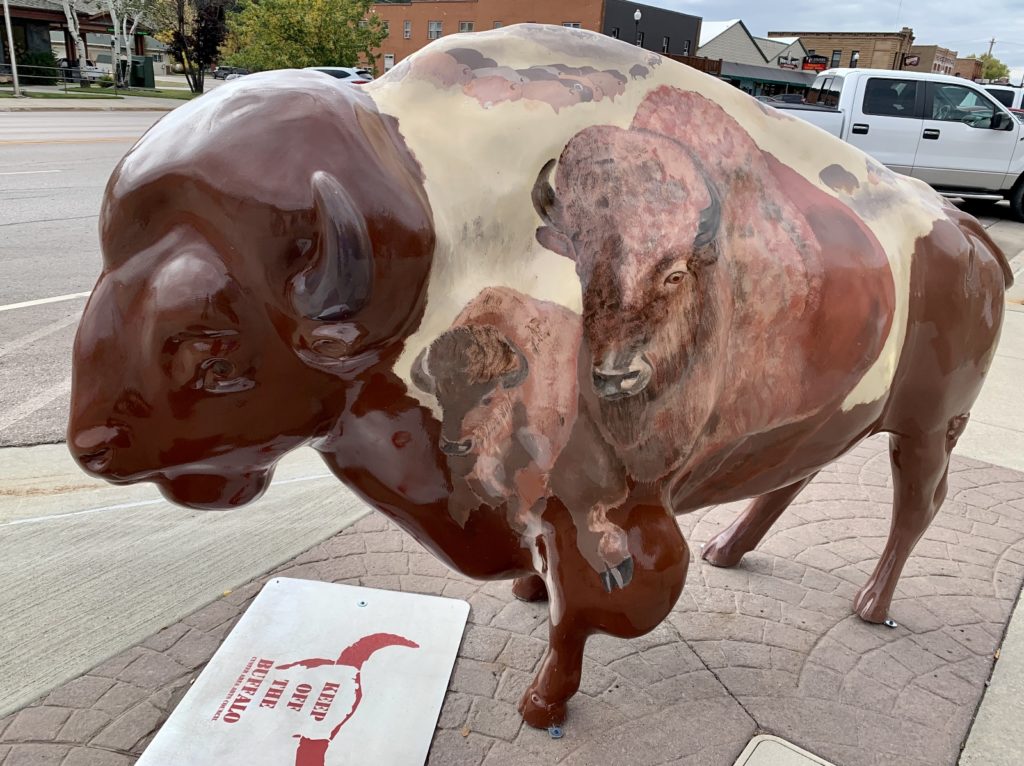
Future Trips
Three weeks was just enough time to scratch the surface of what the Black Hills area has to offer. On our next trip, I want to include Minuteman Missile National Historic Site, Bear Butte State Park, the towns of Lead and Deadwood, more hiking in Custer State Park and a tour of Rapid City to include the presidential statues, Art Alley, Berlin Wall Exhibit at Memorial Park, Chapel in the Hills, and the South Dakota Air & Space Museum. I’d also like to time our visit for the Custer State Park Buffalo Roundup, Black Hills Powwow, and Crazy Horse Volksmarch. Looks like we need at least another three weeks!
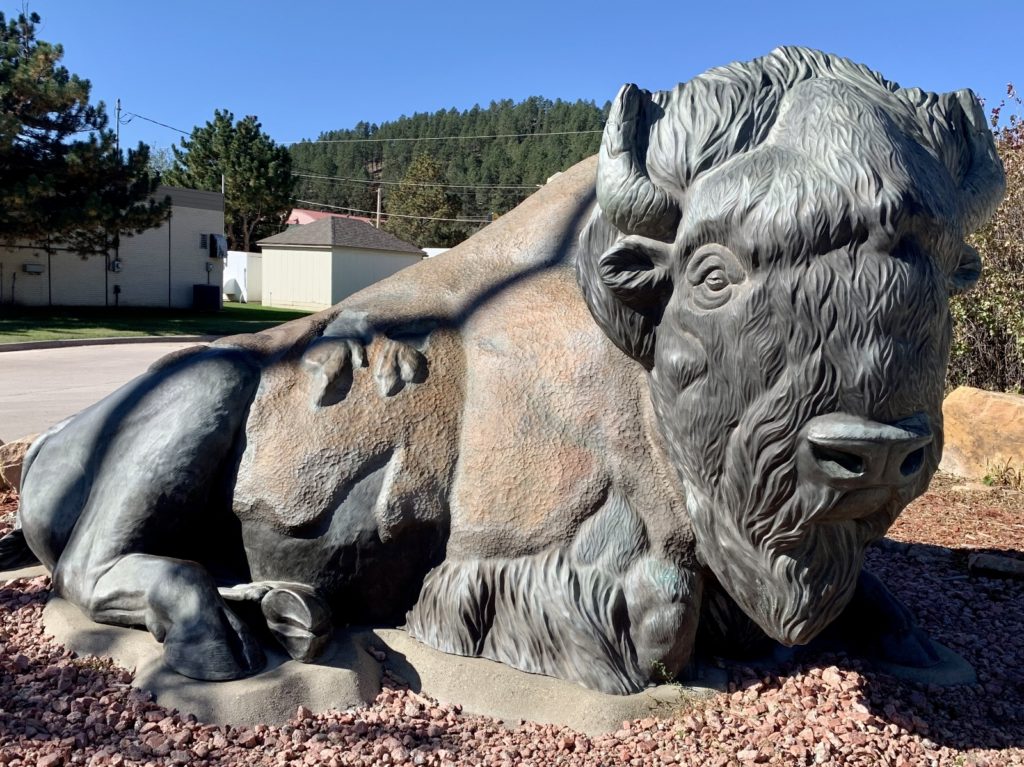
Related Posts
- Devil’s Tower: America’s First National Monument
- South Dakota’s Spearfish Canyon National Scenic Byway
- George S. Mickelson Trail: Rail-to-Trail Hall of Fame
- Jewel Cave National Monument & Wind Cave National Park
- South Dakota’s Custer State Park
- Mount Rushmore National Memorial
- Badlands National Park
Resources
Planning a trip to the Black Hills? Here are some great planning tools that I used for our trip:
The Adventure Continues
Be sure to join us for our next post as we ride the Mickelson Trail, a Rail-to-Trail Hall of Fame route. And don’t forget to check out our Amazon RV and Adventure Gear recommendations. We only post products that we use and that meet the Evans Outdoor Adventures seal of approval. By accessing Amazon through our links and making any purchase, you get Amazon’s every day low pricing and they share a little with us. This helps us maintain this website and is much appreciated!
So much fun! Brings me back and we didn’t do half of what you did!